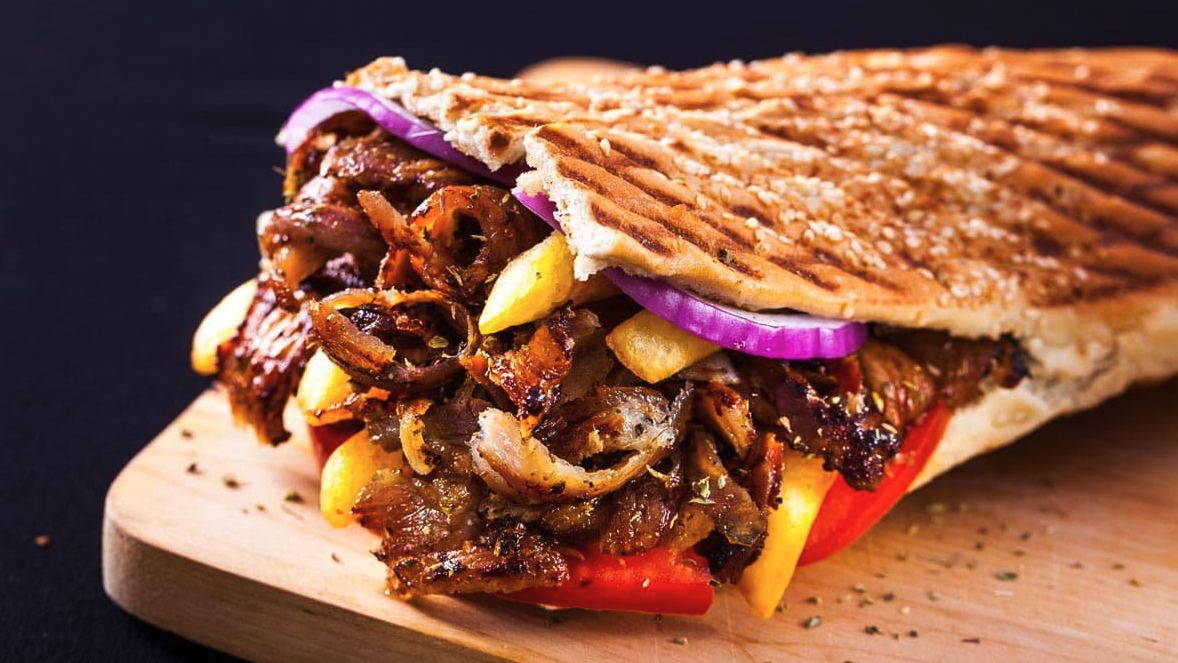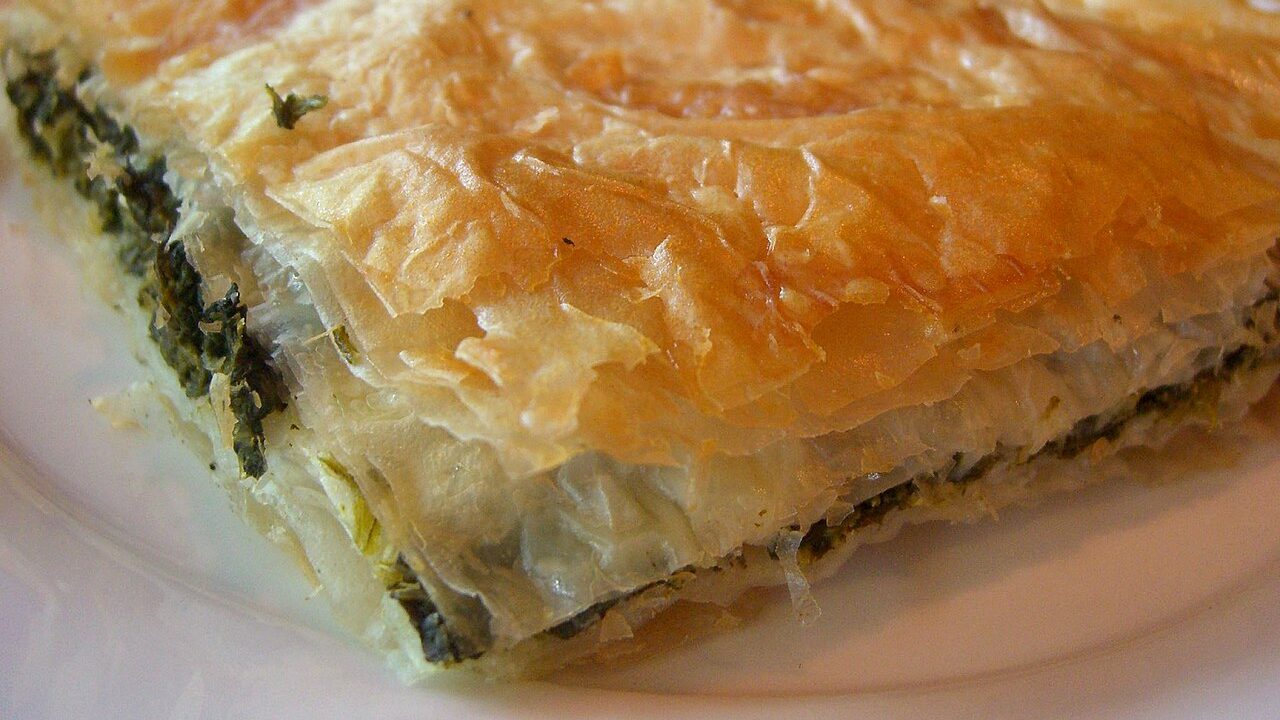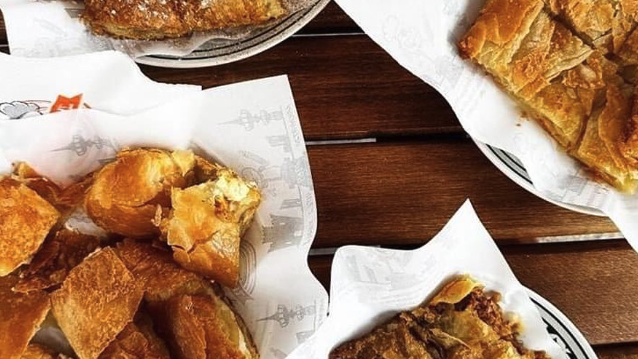Greece: the birthplace of Western culture, the home of Homer, Aristotle and Socrates, of the first great playwrights Aeschylus, Sophocles, and Euripides and the wonders of the ancient world like art from the sculptor Phidias. In the works of ancient Greece food plays an important role – feasts serving as important settings for pivotal plot points, such as in The Iliad when Odysseus tries to persuade Achilles to return to battle over an enticing banquet of goat, sheep and pig roasted on spits with bread and wine.
Every bite tells a story, every ingredient carries centuries of tradition. At Cerca we roam the world in search of authentic food experiences, and we know that the best way to understand a place is through its flavors. We celebrate food as more than sustenance—as a connection to mythology, family, and history.
We’ve decided to go back to the land of ancients to savor eight dishes that define the flavors of Greece, and how they show up on your plate today. Whether you’re navigating the bustling streets of Athens, diving into the deep culinary history of Thessaloniki, or finding hidden gems in Crete, these are the plates that will bring you closer to the soul of this extraordinary country.

1. Moussaka
The Comfort Food of the Gods
Moussaka is Greece’s answer to lasagna but with a distinctly Mediterranean heart. This layered dish, often made with eggplant, minced meat, and a rich Béchamel sauce, became widely popularized in the 1920s by Greek chef Nikolaos Tselementes, who sought to Europeanize Greek cuisine. Yet, its origins stretch far beyond modern Greece, with influences from the Middle East and the Ottoman Empire.
While the exact dish as we know it today didn’t exist in Homeric times, its foundational elements were part of Greek cuisine for centuries.The Ottomans (15th–19th century) ruled Greece for nearly 400 years and introduced eggplant-based stews and layered dishes like “musakka,” which originated in Arab cuisine.
The concept of layering ingredients—especially in pies and baked dishes—was common in ancient Greek cuisine. The Greeks made plakous, an early layered dish, often with vegetables and grains. And the Greeks pioneered the use of olive oil and wine in dishes, both of which feature prominently in moussaka.
Where to Try It
To Kati Allo (Athens) – A no-frills taverna near the Acropolis serving an incredibly rich, home-style moussaka.

2. Souvlaki
The Quintessential Greek Street Food
Souvlaki, meaning “skewered,” has been enjoyed in Greece since ancient times (remember that story from The Iliad?), as evidenced by cooking equipment found in Akrotiri, a Minoan settlement. The word “obeliskos” (small spit), found in classical Greek writings, is directly related to the modern Greek “souvlaki”, which derives from souvla (spit or skewer).
The dish—grilled meat (usually pork or chicken) served with pita, onions, tomatoes, and tzatziki—is a staple of Greek street food. The meat is first marinated in lemon juice, garlic, and spices like cumin, oregano and paprika, giving it a distinct flavor profile of the Mediterranean and helping keep it tender during grilling..
Where to Try It
Kostas (Athens) – This hole-in-the-wall near Syntagma Square has been perfecting souvlaki since 1950.
O Gyros Tou Aristou (Thessaloniki) – Known for its smoky, flavorful souvlaki wrapped in fresh pita.

3. Spanakopita
The Ultimate Greek Pie
Spanakopita, a flaky, spinach-filled phyllo pie, embodies Greece’s love for simple ingredients transformed into something extraordinary. The dish’s origins can be traced to Byzantine times, with influences from the Ottoman borek.
The ancient Greeks didn’t have phyllo dough as we know it today, but they did make layered pies with dough, cheese, and greens. Several ancient texts mention early versions of savory pies, making them a precursor to spanakopita. For example, Tyritas plakountas was a dish described by Athenaeus (2nd century CE) as a pie filled with cheese and honey, similar to modern tiropita (cheese pie). And Hippocrates (5th century BCE) recommended wild greens for their nutritional benefits.
Byzantine cooks (4th–15th century CE) began refining layered pastries, incorporating fine wheat flour and then the Ottoman Empire (15th–19th century CE) introduced paper-thin yufka (an early phyllo dough), which Greek bakers adapted.
Where to Try It
Ariston (Athens) – A century-old bakery (since 1910) specializing in spanakopita with the perfect balance of crispiness and flavor. It’s a little hole-in-the-wall with excellent pies. Voulis 10, Athina 105 62, Greece
Ta Koumparakia (Crete) – A lesser-known gem in Chania making pies using locally sourced wild greens.
Sustainability Tip: Many Greek pies use wild herbs and greens foraged from the countryside, a practice that aligns with regenerative travel by preserving traditional farming knowledge.

4. Fasolada
The Humble Yet Powerful Bean Soup
Fasolada, a simple white bean soup, is often called “the national dish of Greece.”
Fasolada is made with olive oil, tomatoes, onions, carrots, celery, and herbs. The key ingredient—beans—may not have been the same variety we use today, but ancient Greeks consumed legumes extensively, making fasolada one of the few dishes that retains a direct culinary lineage from antiquity.
Fasolada is linked to the festival of Pyanopsia, an ancient Athenian religious celebration dedicated to Apollo.
The festival involved boiling legumes (mainly beans and pulses) with vegetables and olive oil in a large pot—essentially an early version of fasolada. This dish was offered to Apollo as a thanksgiving meal for the year’s harvest, symbolizing prosperity and sustenance. The name of the festival, Pyanopsia (Πυανόψια), comes from the words pyanos (beans) and ops (boiled dish), showing the importance of legumes in ancient Greek rituals.
The dish of fasolada placed on your table wasn’t just a meal—it was a sacred offering, reinforcing its deep connection to Greek history.
Where to Try It
Tis Theatrou to Steki (Athens) – A small taverna that prepares fasolada the old-fashioned way, slow-cooked over a fire.
Diporto (Athens) – A tiny underground tavern from 1887, serving all the classics from Greek cuisine. There’s no fixed menu, and no real ordering, the staff will bring you what’s on offer – chosen based on seasonal availability in the nearby markets, such as classic horiatiki (Greek salad), sardines, or fasolada.

5. Dolmadakia
Stuffed Vine Leaves with a Legacy
Dolmadakia, or stuffed grape leaves, are a beloved meze dish with roots in Persian and Ottoman cuisine. The Greeks have perfected this dish, stuffing the leaves with rice, herbs, and sometimes minced meat.
Though the exact version of dolmadakia we know today wasn’t recorded in ancient Greece, the concept of wrapping food in leaves or edible casings was well established in Greek culinary traditions. Several sources suggest that grape leaves, fig leaves, and cabbage leaves were used in cooking, particularly for preserving food. Thria (Θρία) is the closest known ancient Greek dish to dolmadakia. Described by Athenaeus (2nd century CE), thria were fig leaves stuffed with a mixture of cheese, grains, and honey.
Where to Try It
Ta Karamanlidika tou Fani (Athens) – A deli and restaurant in classic blue and white with all the classic family recipes.
Peskesi (Crete) – A farm-to-table restaurant known for its Cretan version of dolmadakia and it’s commitment to sustainable sourcing of ingredients.
Mavri Thalassa (Thessaloniki) – A seafood restaurant that offers beautiful fresh Greek seafood dishes along with traditional starters done beautifully.

6. Bougatsa
The Sweet and Savory Breakfast Staple
Bougatsa, a flaky phyllo pastry filled with custard, cheese, or minced meat, hails from Thessaloniki. Its roots trace back to the Byzantine era, and it remains a staple breakfast treat.
Ancient Greek cuisine was rich in grain-based dishes, many of which resemble early versions of bougatsa. The Greeks were pioneers in bread and pastry-making, with records of flatbreads, layered dough, and sweet fillings appearing in classical texts.
Plakous (πλακοῦς) were flat, layered pastry made with flour, cheese, and honey, often flavored with nuts. This is one of the earliest Greek sweet pies, mentioned by Aristophanes (5th century BCE). Then there is Gastris (γάστρις), a sweet pastry from Crete, made with sesame, honey, nuts, and layers of dough, similar to baklava or bougatsa of today.
Where to Try It
Bantis Bougatsa (Thessaloniki) – A legendary shop serving up the crispiest, creamiest bougatsa.
Serbetospito (Chania) – Famous for its sweet versions with cinnamon and powdered sugar.

7. Choriatiki
The True Greek Salad
A real Greek salad—choriatiki—is nothing like the lettuce-heavy versions abroad. Made with tomatoes, cucumbers, onions, feta, and olives, it’s a dish that highlights Greece’s agricultural wealth.
Though the exact modern version of choriatiki didn’t exist in ancient Greece, its core ingredients—fresh vegetables, olives, cheese, and olive oil—were all essential parts of the ancient Greek diet. In many ways, Greek salad is a continuation of the simple, seasonal, and nutritious meals that sustained ancient Greek society.
Olive trees were sacred in ancient Greece, and olive oil was essential for both food and religious offerings. Known as “τυρός” (tyros), ancient Greek cheese was similar to modern feta, made from sheep’s or goat’s milk. Common in Greek salads today, onions were a staple in ancient Greek meals, eaten raw or cooked, along with oregano, thyme, and other wild herbs.
Where to Try It
To Kanoni (Corfu) – Offers a salad made with island-grown olives and artisanal feta. Also be sure to order the orange cake, a Greek specialty that’s hard to find anywhere else.

8. Loukoumades
Greece’s Ancient Doughnut
Loukoumades, crispy fried dough balls drizzled with honey, have been enjoyed since ancient times.
According to Callimachus (3rd century BCE), “honey tokens” (χρύσας τροφάς, “chrýsas trofás”) were awarded to victorious Olympic athletes. These small fried dough balls, soaked in honey, were considered a “food of the gods”, a reward for strength, discipline, and excellence. The Olympics were dedicated to Zeus, and offerings of honey and wheat-based cakes were common in religious ceremonies, linking loukoumades to both athleticism and divine favor.
Aristophanes (5th century BCE) and Athenaeus (2nd century CE) describe a deep-fried dough dish called “enkrides”, which was made from wheat flour, fried in olive oil, and coated with honey and sesame seeds.This dessert closely resembles modern loukoumades in both preparation and ingredients, showing that the ancient Greeks enjoyed similar sweets.
These little donuts are still served at festivals, weddings, and religious feasts, much like in ancient Greece. They’re a staple of Panigiria (village festivals) throughout Greece, keeping its connection to communal joy and victory alive.
Where to Try It
Krinos (Athens) – Serving loukoumades since 1923 with traditional honey and cinnamon.
The loukoumades of Loxandra (Thessaloniki) – A modern take on the classic, with fun toppings like pistachios and dark chocolate.
When you’re looking for authentic Greek food you’ll find that it’s not always common for these places to have a website or social media presence – so don’t worry if the recommendation you get on the street isn’t easy to track down online – most likely this is exactly the place you want to try!